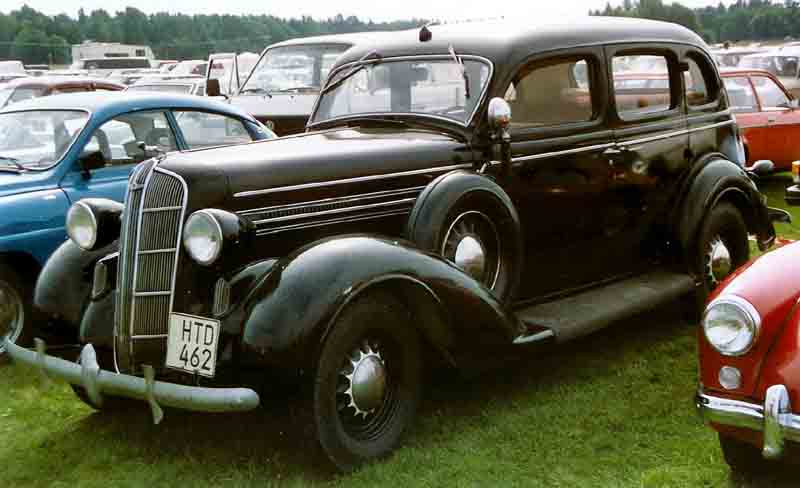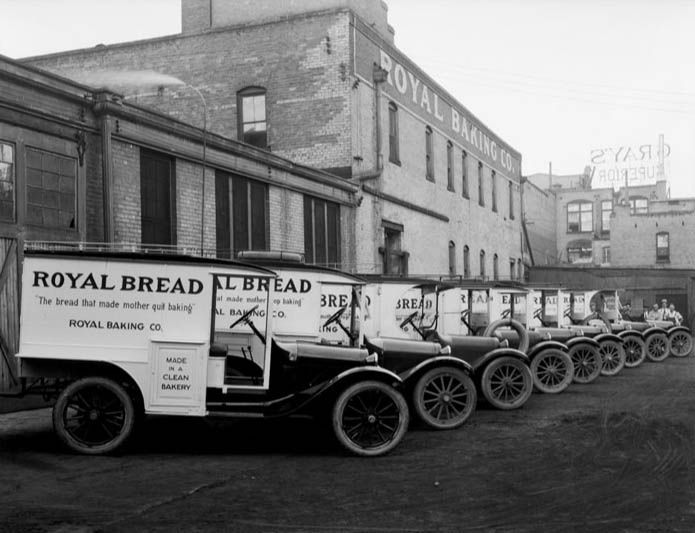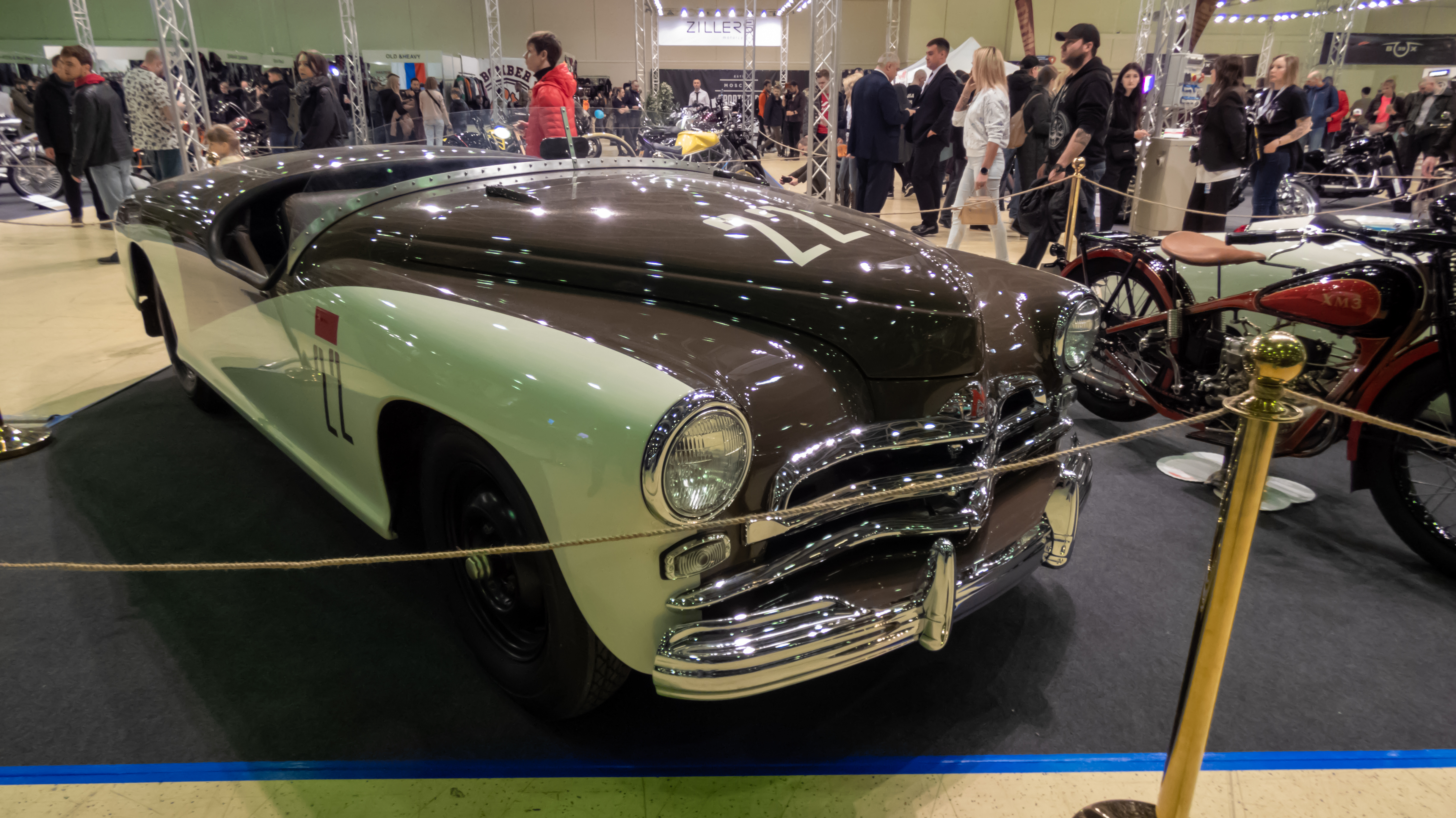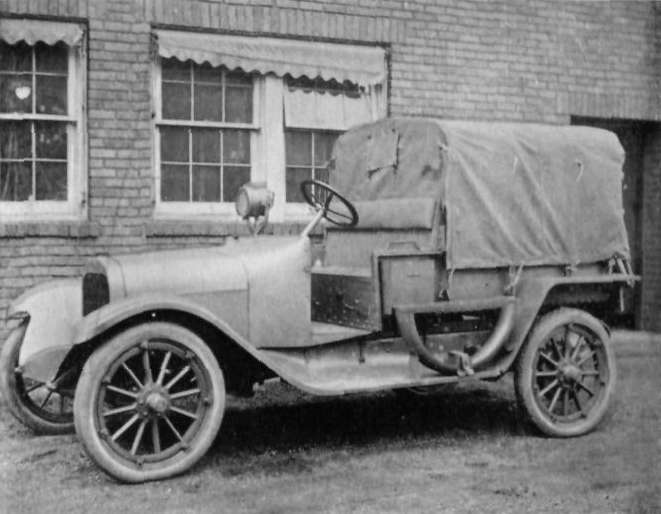|
Dodge Series D5
The Dodge Series D5 appeared in October 1936 for the 1937 model year, replacing the previous year's Series D2 (also known as the "Dodge Beauty Winner"). Series D5 The D5 did not differ particularly from its predecessor, continuing to use the same flathead straight-six engine, single-disc dry-plate clutch, and three-speed manual transmission. A vacuum-operated semi-automatic system was an available option. The body was lightly facelifted, with a modified split grille, larger headlamps, and with the horns moved behind the grille rather than being mounted conspicuously on the fender aprons. Lee, p. 257 A chrome strip continued the length of the car. On the inside, the dashboard had recessed knobs and flush-fitting gauges, as well as safety padding on the front seatbacks and "no-snag" interior door handles. The hypoid rear axle was also new and meant a lower transmission tunnel as well as a flat floor at the rear of the car. Most D5's sat on the shorter wheelbase (one inch short ... [...More Info...] [...Related Items...] OR: [Wikipedia] [Google] [Baidu] |
Dodge
Dodge is an American brand of automobiles and a division of Stellantis, based in Auburn Hills, Michigan. Dodge vehicles have historically included performance cars, and for much of its existence Dodge was Chrysler's mid-priced brand above Plymouth. Founded as the Dodge Brothers Company machine shop by brothers Horace Elgin Dodge and John Francis Dodge in the early 1900s, Dodge was originally a supplier of parts and assemblies to Detroit-based automakers like Ford. They began building complete automobiles under the "Dodge Brothers" brand in 1914, predating the founding of Chrysler Corporation. The factory located in Hamtramck, Michigan was the Dodge main factory from 1910 until it closed in January 1980. John Dodge died from the Spanish flu in January 1920, having lungs weakened by tuberculosis 20 years earlier. Horace died in December of the same year, perhaps weakened by the Spanish flu, though the cause of death was cirrhosis of the liver. Their company was sold by their ... [...More Info...] [...Related Items...] OR: [Wikipedia] [Google] [Baidu] |
Chrysler Flathead Engine
The Chrysler flathead engine is a Sidevalve engine, flathead automotive engine manufactured by the Chrysler Corporation from 1924 through the early 1960s. The flathead engine came in four-,six-, and eight-cylinder configurations and varying displacement, with both a cast iron and cast aluminum cylinder head. It was installed in Chrysler, DeSoto, Dodge and Plymouth branded vehicles. Straight-4 Chrysler introduced a Inline-four engine, straight-four derivative of their new flathead Straight-six engine, straight-six in 1926. Initially used by Chrysler, the straight-four was fitted to Plymouth (automobile), Plymouth and Dodge light trucks beginning in 1929, lasting in production through 1933. The original version displaced and produced 38 hp (28 kW). This was only produced in 1926, with displacement reduced to for 1927 and 1928. Power was initially rated the same but was upped to 45 hp (34 kW) during the 1928 model year. After the introduction of the Plymouth br ... [...More Info...] [...Related Items...] OR: [Wikipedia] [Google] [Baidu] |
Dodge Vehicles
Dodge is an American brand of automobiles and a division of Stellantis, based in Auburn Hills, Michigan. Dodge vehicles have historically included performance cars, and for much of its existence Dodge was Chrysler's mid-priced brand above Plymouth. Founded as the Dodge Brothers Company machine shop by brothers Horace Elgin Dodge and John Francis Dodge in the early 1900s, Dodge was originally a supplier of parts and assemblies to Detroit-based automakers like Ford. They began building complete automobiles under the "Dodge Brothers" brand in 1914, predating the founding of Chrysler Corporation. The factory located in Hamtramck, Michigan was the Dodge main factory from 1910 until it closed in January 1980. John Dodge died from the Spanish flu in January 1920, having lungs weakened by tuberculosis 20 years earlier. Horace died in December of the same year, perhaps weakened by the Spanish flu, though the cause of death was cirrhosis of the liver. Their company was sold by their fam ... [...More Info...] [...Related Items...] OR: [Wikipedia] [Google] [Baidu] |
RAC Horsepower
Horsepower (hp) is a unit of measurement of power, or the rate at which work is done, usually in reference to the output of engines or motors. There are many different standards and types of horsepower. Two common definitions used today are the mechanical horsepower (or imperial horsepower), which is about 745.7 watts, and the metric horsepower, which is approximately 735.5 watts. The term was adopted in the late 18th century by Scottish engineer James Watt to compare the output of steam engines with the power of draft horses. It was later expanded to include the output power of other types of piston engines, as well as turbines, electric motors and other machinery. The definition of the unit varied among geographical regions. Most countries now use the SI unit watt for measurement of power. With the implementation of the EU Directive 80/181/EEC on 1 January 2010, the use of horsepower in the EU is permitted only as a supplementary unit. History The development of the steam ... [...More Info...] [...Related Items...] OR: [Wikipedia] [Google] [Baidu] |
Rumble Seat
A rumble seat (American English), dicky (dickie/dickey) seat (British English), also called a mother-in-law seat, is an upholstered exterior seat which folded into the rear of a coach, carriage, or early motorcar. Depending on its configuration, it provided exposed seating for one or two passengers. History Additional occasional seating appeared in the latter centuries of evolution of the coach and carriage. The 1865 edition of Webster's ''An American Dictionary of the English Language'' defines a dickie seat or rumble as "A bootBoot, ''n.'' ...3. A box or receptacle covered with leather at either end of a coach. The term "boot" is still used in British English, but elsewhere, including North America, this is called the " trunk". with a seat above it for servants, behind a carriage." Similar to the dickie seat on European phaetons was the ''spider'', a small single seat or bench on spindly supports for seating a groom or footman. Before World War I, dickie or rumble seats ... [...More Info...] [...Related Items...] OR: [Wikipedia] [Google] [Baidu] |
GAZ-51 NJ-130).8>
The GAZ-51 (nickname ''Gazon'') was a Soviet truck manufactured by GAZ. Its first prototypes were produced before the end of World War II and has been influenced by Studebaker US6. The mass production started in 1946. A 2.5 ton 4×2 standard variant was joined in 1947 by almost identical 2 ton 4×4 GAZ-63. Both variants were powered by 6-cylinder 3485 cc engine. GAZ-63s was manufactured with some changes until 1968 and production of GAZ-51 continued until 2 April 1975. The trucks were also manufactured under the Soviet license in Poland (as the Lublin-51), North Korea (as the Sungri-58) and China (as the Yuejin Nanjing Automobile is a state-owned enterprise with a history that dates from 1947, |
GAZ-M20 Pobeda
The GAZ-M20 "Pobeda" (russian: ГАЗ-М20 Победа; ''победа'' means ''victory'') was a passenger car produced in the Soviet Union by GAZ from 1946 until 1958. It was also licensed to the Polish Passenger Automobile Factory and produced as the FSO Warszawa. Although usually known as the GAZ-M20, an original car's designation at that time was just M-20: M for "Molotovets" (the GAZ factory was named after Vyacheslav Molotov). History The first sketches of similar-looking cars were completed by Valentin Brodsky in 1938 and by Vladimir Aryamov in 1940, which revealed a growing tendency towards streamlined car design in the Soviet Union. Aryamov's two-door coupe GAZ-11-80, designed in 1940, greatly resembled the later Pobeda and was in many ways identical to it. However, after the German invasion of 1941 military priorities delayed the work on the new car and the factory was switched to military production. The first Pobeda was developed in the Soviet Union under chief engin ... [...More Info...] [...Related Items...] OR: [Wikipedia] [Google] [Baidu] |
Soviet Union
The Soviet Union,. officially the Union of Soviet Socialist Republics. (USSR),. was a transcontinental country that spanned much of Eurasia from 1922 to 1991. A flagship communist state, it was nominally a federal union of fifteen national republics; in practice, both its government and its economy were highly centralized until its final years. It was a one-party state governed by the Communist Party of the Soviet Union, with the city of Moscow serving as its capital as well as that of its largest and most populous republic: the Russian SFSR. Other major cities included Leningrad (Russian SFSR), Kiev (Ukrainian SSR), Minsk ( Byelorussian SSR), Tashkent (Uzbek SSR), Alma-Ata (Kazakh SSR), and Novosibirsk (Russian SFSR). It was the largest country in the world, covering over and spanning eleven time zones. The country's roots lay in the October Revolution of 1917, when the Bolsheviks, under the leadership of Vladimir Lenin, overthrew the Russian Provisional Government ... [...More Info...] [...Related Items...] OR: [Wikipedia] [Google] [Baidu] |
Rumble Seat
A rumble seat (American English), dicky (dickie/dickey) seat (British English), also called a mother-in-law seat, is an upholstered exterior seat which folded into the rear of a coach, carriage, or early motorcar. Depending on its configuration, it provided exposed seating for one or two passengers. History Additional occasional seating appeared in the latter centuries of evolution of the coach and carriage. The 1865 edition of Webster's ''An American Dictionary of the English Language'' defines a dickie seat or rumble as "A bootBoot, ''n.'' ...3. A box or receptacle covered with leather at either end of a coach. The term "boot" is still used in British English, but elsewhere, including North America, this is called the " trunk". with a seat above it for servants, behind a carriage." Similar to the dickie seat on European phaetons was the ''spider'', a small single seat or bench on spindly supports for seating a groom or footman. Before World War I, dickie or rumble seats ... [...More Info...] [...Related Items...] OR: [Wikipedia] [Google] [Baidu] |
Straight-six Engine
The straight-six engine (also referred to as an inline-six engine; abbreviated I6 or L6) is a piston engine with six cylinders arranged in a straight line along the crankshaft. A straight-six engine has perfect primary and secondary engine balance, resulting in fewer vibrations than other designs of six or less cylinders. Until the mid-20th century, the straight-six layout was the most common design for engines with six cylinders. However, V6 engines became more common from the 1960s and by the 2000s most straight-six engines had been replaced by V6 engines. An exception to this trend is BMW which has produced automotive straight-six engines from 1933 to the present day. Characteristics In terms of packaging, straight-six engines are almost always narrower than a V6 engine or V8 engine, but longer than straight-four engines, V6s, and most V8s. Straight-six engines are typically produced in displacements ranging from , however engines ranging in size from the Benelli 750 ... [...More Info...] [...Related Items...] OR: [Wikipedia] [Google] [Baidu] |
Dodge 4-Door Touring Sedan 1936
Dodge is an American brand of automobiles and a division of Stellantis, based in Auburn Hills, Michigan. Dodge vehicles have historically included performance cars, and for much of its existence Dodge was Chrysler's mid-priced brand above Plymouth. Founded as the Dodge Brothers Company machine shop by brothers Horace Elgin Dodge and John Francis Dodge in the early 1900s, Dodge was originally a supplier of parts and assemblies to Detroit-based automakers like Ford. They began building complete automobiles under the "Dodge Brothers" brand in 1914, predating the founding of Chrysler Corporation. The factory located in Hamtramck, Michigan was the Dodge main factory from 1910 until it closed in January 1980. John Dodge died from the Spanish flu in January 1920, having lungs weakened by tuberculosis 20 years earlier. Horace died in December of the same year, perhaps weakened by the Spanish flu, though the cause of death was cirrhosis of the liver. Their company was sold by their fam ... [...More Info...] [...Related Items...] OR: [Wikipedia] [Google] [Baidu] |








